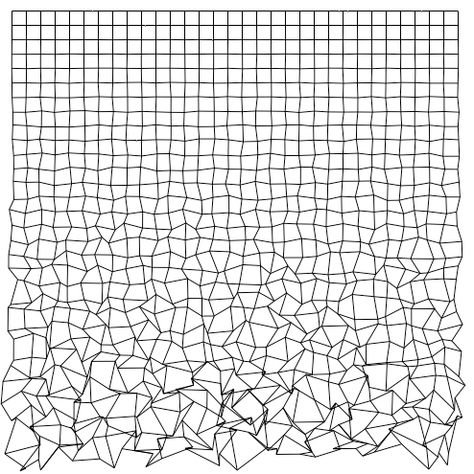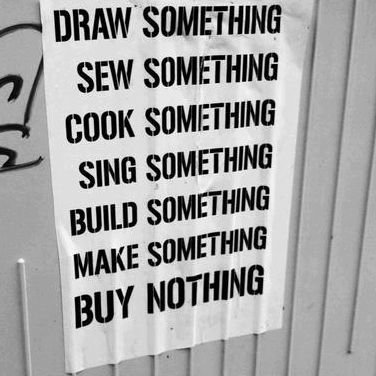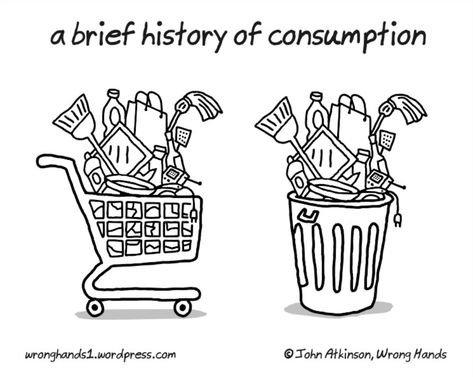
April 28, 2021
ANI
PHIL 360
The Contemporary Human Condition
The tragedy of the third millennium will evidently be humankind's vast ingenuity and innovation. Technology has transformed the landscape of reality; an incalculable amount of knowledge lies at the fingertips of anyone with internet access. Countless issues have been addressed and minute to monumental problems have been solved as a result of computed calculations. Humans have coded and created a machine that is so all-encompassing that most are hardly conscious of its existence. The implementation of the mass media robot operating system has slipped society into a self-imposed dystopia. Masses feared and imagined small robots taking over and becoming artificial enemies, but hardly accounted for a robot in an abstract form that preys off knowledge of human behavior and brain processing. Human beings have allowed the media to become the modern Trojan horse as they have not acknowledged that free will is largely influenced by both socialization and unconscious processing, allowing consumerism and corporations to assume control of human beings and exploit the Earth to the point of extinction.
The advancement of technology is directly associated with increasing psychological and neurological research; for the first time in human history, the brain is just beginning to be understood. One examiner of human consciousness, Benjamin Libet, found there are several milliseconds of time difference between conscious and unconscious events. He presents his findings in, “The Neural Time — Factor in Perception, Volition and Free Will.” This research of his finds that, “Readiness Potential (RP) and Time of Conscious Intention (W) were studied through electrical impulses via skin application: “Results clearly show that onset of RP preceded W by about 350msec, this means that the brain has begun the specific preparatory processes for the voluntary act well before the subject is even aware of any wish or intention to act; i.e. the volitional process must have been initiated unconsciously (or non-consciously)” (Libet 263). As a human, it is impossible to deduce that there are delays between unconscious and conscious sensory events. Individuals are unable to determine this delay naturally, leaving them susceptible to targeted advertisements or other attention-seeking practices. Libet elaborates on this, “behavioral responses to sensory signals or images can be made within as little as 100 msec” (Libet 267). In the same instant the brain sees something, it decides how it feels towards that image and how to proceed forward, hardly leaving time for any impulse control or critical thinking. Free will is construed by bright colors and beautiful photographs displayed in marketing and social media, where humans have no time to deconstruct the intentions of what visions they are being bombarded with.
Ann Marie Barry further discusses this relationship between emotion and perception in, “Perception Theory”. Visual perception carries an enormous amount of weight within the human consciousness as signals traveling through the brain first go through the thalamus and amygdala, emotional processing centers. Barry says:
“In this part of the process, the perceived shape of the situation is quickly matched to others stored in emotional memory and an emotional response then is framed that is in keeping with past positive or negative experience. Although we are not aware of the process, the end result is felt by us—most dramatically as a “fight or flight” response in extreme situations, or in non life-threatening situations as a feeling or attitude that sets up our cognitive thinking, skewing it automatically toward a particular response” (Barry 48).
Essentially, humans remain unaware of what emotions or past experiences are actively encoding reality as it occurs, they merely experience the end result. This leaves little conscious room for concrete steps to reshape or redirect past experiences and thoughts, making it simple for an algorithm to latch onto an individual's behavior and assert control. Concerningly, reason and logic in daily situations become conditioned according to emotions, as Barry says: “In the process of our becoming, visual communication plays a crucial role, one that is particularly vulnerable to emotional learning and to manipulation by political, economic and other vested interests” (Barry 61). As the average amount of time spent in front of a screen exponentially increases, the less humans are making logical or even conscious decisions. The constant bombardment of advertisements, films, images, and the usage of highly visual social media are collectively hacking and rewiring the brain’s perception processes. Thus, companies, governments, and individuals looking to exploit populations are handed a step-by-step guide through the establishment and evaluation of neurological procedures.
Psychology and neuroscience combined with a business model and mentally manipulative technology does not bode well for the future of civilization. Consumerism is eating away at both the brains of humans and the Earth that feeds them. Social media is defined now by constant pop-up ads, email inboxes are clogged with news of sales and new releases, and videos of influencers sharing their favorite products and clothes are now considered entertainment. America has become one giant corporation, politics and celebrities alike playing into the simplicity of social media superpowers. Ayers, in his article, “ What are the near-term challenges to sustainability? “, discusses the dominance of the consumerism theme in Western society:
“Materialism is rampant in our culture. It is perhaps the most important social force in our society. It drives our economy, fuels our desires, and preoccupies our minds. Americans are addicted to shopping and self-indulgence. Consumers are caught in a vicious cycle in which they are convinced to spend more, so they must earn more, so they can spend more, and on and on (as a bumper sticker reads, “Born to shop, forced to work”). Part of the reason our country is now in the throes of an economic crisis is that we continue to spend even when we don’t have any money” (Ayers 3).
Credit card debt is one of the most pressing issues of multiple generations, yet Americans still continue to put shopping in the category of self-care and destressing, just as advertising companies intended them to do. These constant habits of overspending and over consuming are precisely the reason for the global environmental crisis. Consumption is fed through production, which depends on naturally derived materials and resources to create what goods are in demand. Emissions from production and shipping remain unacknowledged by companies constantly speeding up both, while simultaneously advertising faster delivery rates and cheaper products. Americans are targeted by ads pertaining to precisely what products they desire, “Products are used and then returned to the environment as waste. Both production and disposal, and sometimes product use, increase environmental stress” (Ayers 1). Consumption is a major issue just in the creation and implementation of products but disposal of said products is just as crippling. Nevertheless, companies continue to adversely affect the environment and their consumers, constantly psychologically influencing people to spend money, “This was the objective of the rapidly growing field of advertising: convince people to buy products they did not need. After decades of being bombarded by advertisements, most Americans unquestioningly accept materialism as a way of life. The continuous increases in per-capita consumption rate have led to an increasingly unsustainable American lifestyle” (Ayers 3). Companies have Americans hooked on spending more and having more, resulting in the slow reduction of free will in a person’s life, as well as the quality and health of the planet on which they reside.
Consumerism is truly an addiction—Americans are addicted to more, more, more, and spending money unconsciously and unnecessarily. This addiction has been implemented through the visual perception processing evident in the brain, while also latching onto reward centers and releasing dopamine upon the purchase or receiving of products. People are driven by an uncontrollable and unconscious need to consume and spend money that they have little opportunity to acknowledge or exert control over, as the brain gives little to no chance to consciously reframe perception of visual images. Once a person begins to shop on a certain site and positively reacts, data mined by companies records this information, right along with their brain. Internet service providers enable people to access platforms and products for free. Or, at least free to the naked eye: “Internet giants sell our attention to companies that produce goods and services (from clothing and food to politics). Collecting information about someone’s interests allows Google and Facebook to hang hundreds of virtual tags to each user (like “BMW lover”, “heavy eater” or “unemployed”). Those tags help advertisers to distinguish their potential prey from the faceless internet crowd” (RT). Users are watching ads, leaving their raw data interactions and movements on the screen to become the targeted product, then coded according to what content they interact with most. That coding of data is implemented into cells that aim to control, “Algorithms tend to evaluate our virtual personality based on where we go, what we are interested in, what we buy. This data forms our digital footprint, which we leave behind all over the internet. IT giants use our footprint to keep our attention and increase the time spent on their services and applications, where they bombard us with targeted ads and any other information they need'' (RT). A person’s digital footprint designs the blueprint for their environmental footprint—the more money they spend, the more harm is done to the world. Companies have weaponized human behavior, eliciting damage to the environment and to everyone around them. Users are not being provided free goods and services, they simply are what is being bought and sold, “By engaging in virtually any kind of activity on the net, we give corporations access to our eyes and ears — they analyze our perception of the world, our likes and dislikes. In return, they give us a virtual version of the world, tailored to us in such a way as to hold our attention as long as possible” (RT). Anyone with enough money, power, and data is able to wield one’s own weaknesses against their own brain and body. It has been studied via socialization that when a child is raised by wolves, it will adapt to that environment and those needs. Hence, the same is true for a child being raised by a computer. Humanity is eroding, along with the home it derives the essence of life from.
Propaganda is acknowledged as a part of history but none of the process is left in the past. Nearly every moment of the modern human lifestyle assails one with miscellaneous notifications, commandeering ads, and algorithmic actions. The combination of all of these, coinciding with the minimal milliseconds utilized in cognitive thinking have allowed human’s free will to become hacked. This lack of conscious living in turn encourages consumerism which has led to extreme environmental degradation in corners of the world. Humanity is naturally attracted to all of the images pushed in front of them. Life is consumed through images but now images are consuming humanity, while the markets financing said images are profiting exponentially as human brains are exploited and engaged in over spending and over consumption, leaving them to feel more emotionally fulfilled by raw data than by love itself. Humanity is participating in its own oppression, even controlling it.
The slow and tortuous destruction of the Earth is simultaneously killing human brains as communication skills become extinct along with species of flora and fauna. In order to change this progression, humans must regain consciousness from the culture of consumerism. Sustainability is attainable, if people are able to remove themselves from internet influences and prevent planetary destruction.
References
Ayers book section, “what are the near-term challenges to sustainability?” 2017
Burns, Kelly, and Antoine Bechara. “Decision Making and Free Will: A Neuroscience
Perspective.” Behavioral Sciences & the Law, vol. 25, no. 2, 2007, pp. 263–280., doi:10.1002/bsl.751.
Libet, Benjamin. “The Neural Time — Factor in Perception, Volition and Free Will.”
Neurophysiology of Consciousness, 1993, pp. 367–384., doi:10.1007/978-1-4612-0355-1_22.
Barry, Ann Marie. “Perception Theory.” Handbook of Visual Communication, 2004, pp. 67–84.,
doi:10.4324/9781410611581-10.




